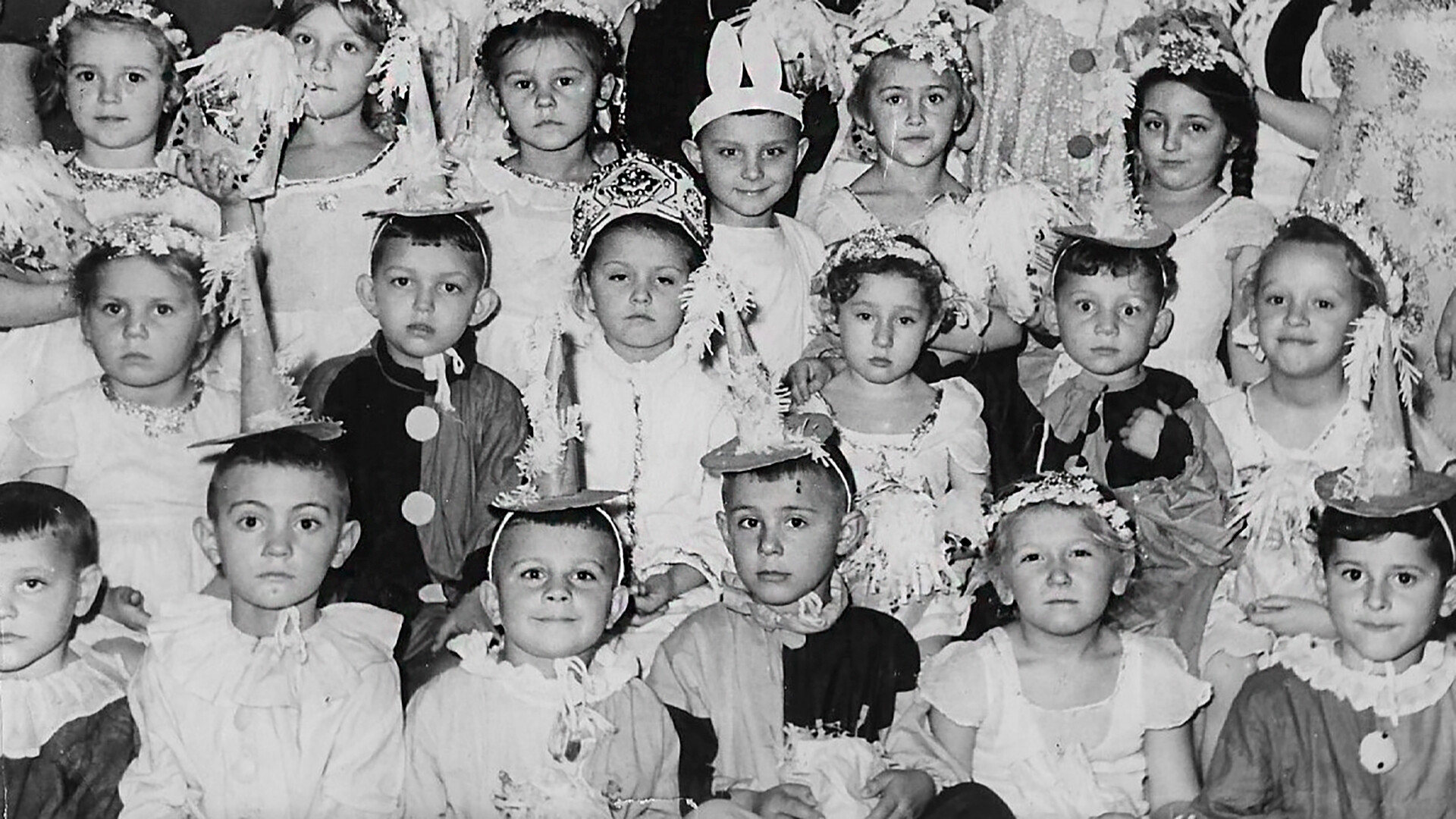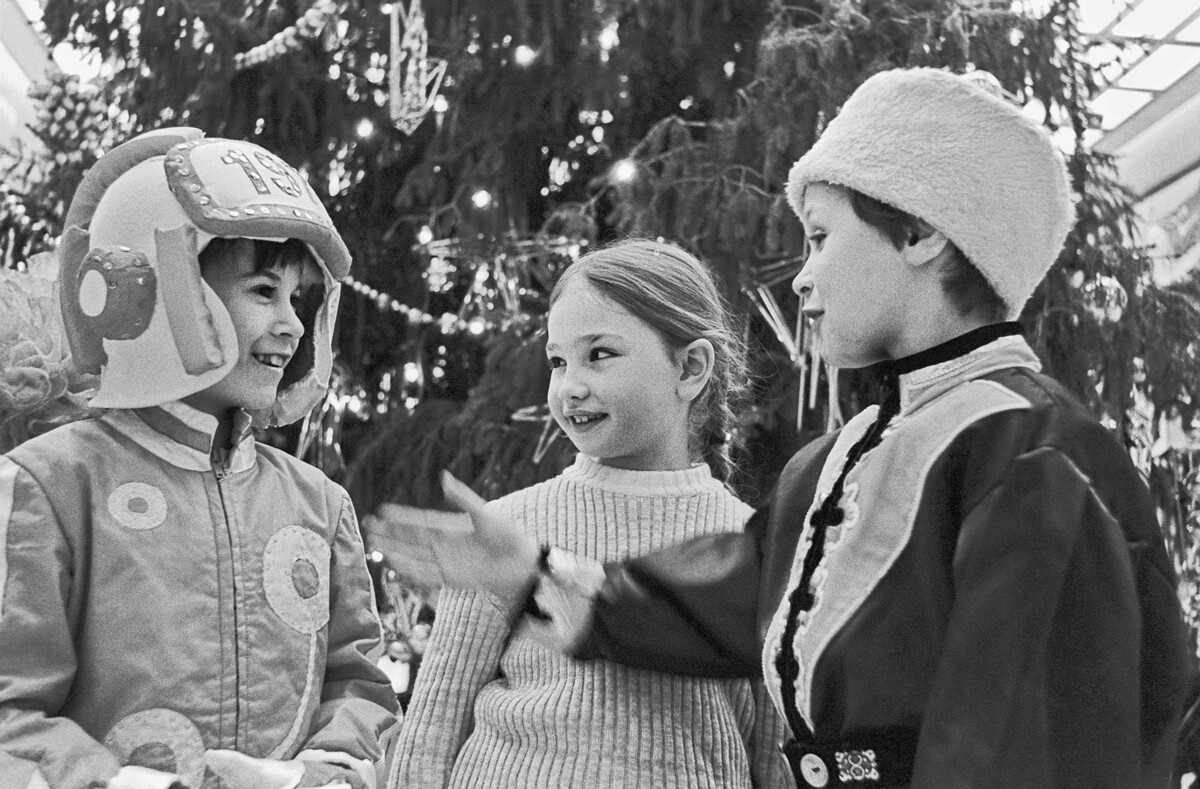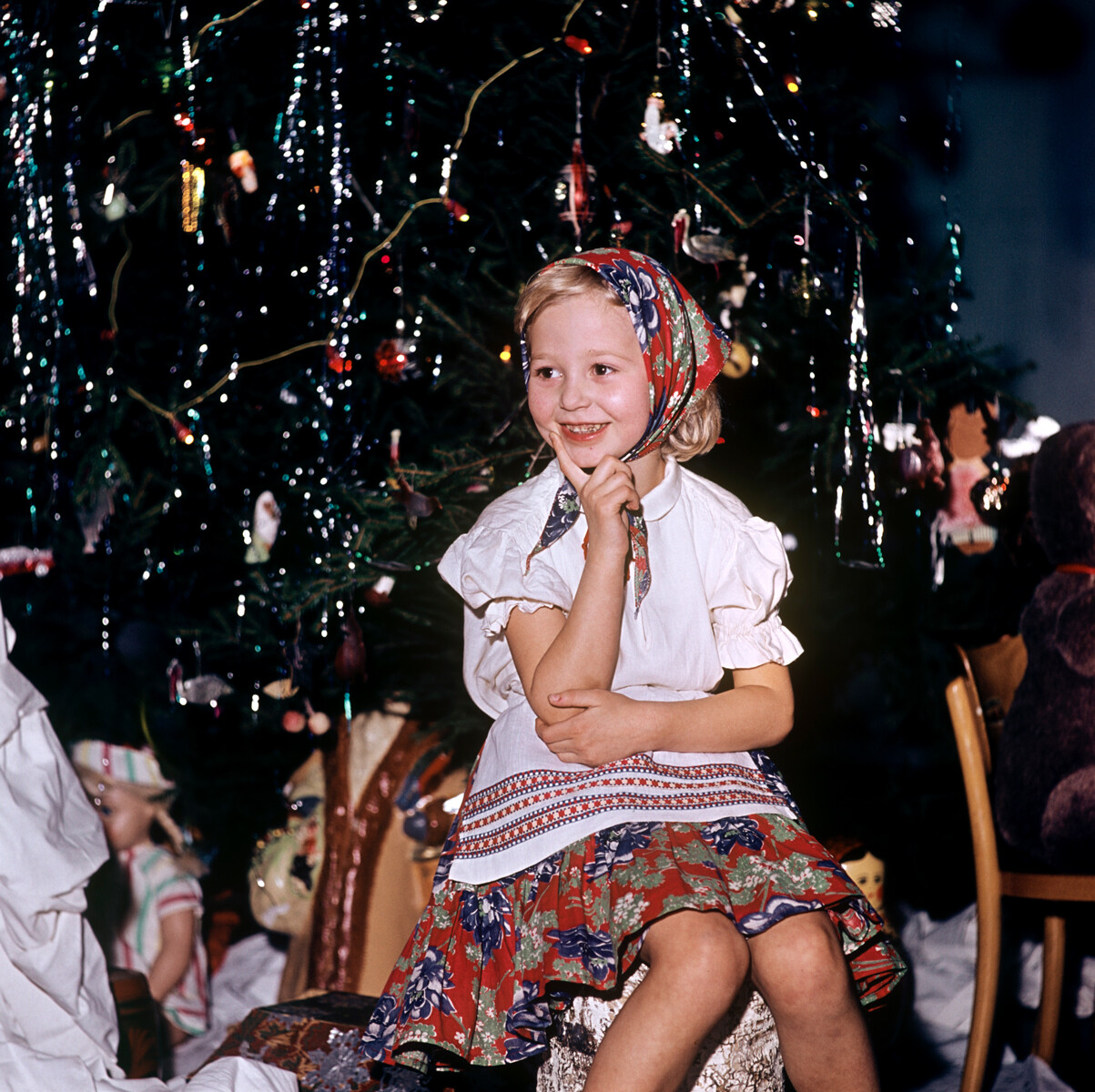
New Year matinees in kindergartens and schools were the most loved holidays for all Soviet children. They spent a long time preparing for them, learning poems, songs, dances and, sometimes, staging entire performances. At children's New Year shows ( ‘Yolka’, literally ‘Christmas tree’, as these performances were called) it was traditional to come not just dressed up, but wearing a real fancy costume. The tailor's role, however, was typically left to children's parents. Few could afford to buy a costume in the 'Detsky Mir' ('Children's World') store; most had to conjure it themselves. Options were limited only by parents' imagination and creativity.
A ‘snowflake’ girl paired with a ‘bunny’ boy was the most popular image. It is not immediately clear why it happened so historically, but we can assume that the reason lies in the simplicity of sewing those outfits, since parents and grandparents handcrafted everything from whatever they had handy the night before the festive occasion.
"The ‘snowflake’ costume was really easy to make. One could take a white petticoat and stitch wide bandages on it in circles. They were layered until it looked like a Spanish skirt. Then, to make the skirt fluffy and "stand" beautifully, some starch was diluted in water, the skirt was dipped in it and then dried upside down. Tinsel was sewn on top of it to make it shine and glitter. It was even easier to make the top – a regular white T-shirt was embroidered with lace and tinsel," says Olga, who herself wore such a costume to festive matinees back in the 1970s.
Those who had such an opportunity bought acetate silk and sewed a real, full-fledged dress. But, very few people did that. The problem was not even in the fabric, but in the fact that serious tailoring required the use of a sewing machine, which by far not everyone had at home. And, of course, it also required time, which few had, as all family members usually worked.
It was even easier with ‘bunnies’. A boy was dressed in a white shirt and dark shorts. To make the image complete, one could add a bowtie and glue a cotton wool tail on the shorts. The main part of the image – the ears – were cut out of cardboard, covered with cotton wool and attached to a hairband.
To make their children stand out from the crowd of ‘snowflakes’, some parents would sew costumes of other characters for their daughters. Olga was once Little Red Riding Hood: “Due to the shortage of quality fabrics, we bought them in advance, just in case we ever needed them. At some point, before New Year's Eve, a costume of red sateen was made for me. My mom sewed a skirt and blouse and my dad made a kind of corset out of thick cardboard and covered it with some black fabric. It looked like a kind of MMA champion's belt, which tied the skirt and blouse together."
Another character of children's New Year matinees was ‘Malvina’. She had blue hair, but nobody would risk dyeing their daughter’s hair and there were no wigs of this color anywhere. Therefore, only the color of the costume did remind of ‘Malvina’: she wore a beautiful blue dress, coupled with a luxurious bow on her head.
After Yuri Gagarin’s pioneering flight in 1961, the cosmonaut costume remained to be off the rage for a long time. However, for some reason, it was sewn only for boys.
Any overalls served as a basis, with layers of foil glued or stitched atop of them. The helmet was made of cardboard, but it was especially cool to find an old motorcycle helmet and glue it over with foil. So the general outfit really looked like a spacesuit, with the red letters "USSR" put on the helmet – just like on the real one!

There typically were some beautifully shaped animal masks for sale. It was the easiest way to turn a child into a ‘bear’, ‘fox’, ‘rabbit’ or ‘squirrel’. However, costumes still had to be sewn from scratch and, most often, out of old worn-out fur-coats, which were no longer fit to wear and were stored away in the closet. So, at times, the ‘rabbits’ were quite real!
In the USSR, consisting of republics inhabited by different peoples, national costumes were most certainly popular. For example, the costume of a Ukrainian woman consisted of a skirt with a ‘rushnik’ (apron), a wide-sleeved blouse and a flower wreath with numerous satin ribbons woven into the braids. The boy's version was made up of ‘sharovary’ (wide pants) and a long girded shirt.
Girls were also sometimes dressed as ‘gypsies’. They put on a long black skirt, lots of beads, threw a colorful scarf over their shoulders, curled their hair and tied a headscarf. There was also an ‘Uzbek’ costume: a brightly colored robe, coupled with an embroidered skullcap and a bunch of braids.
Later, in the 1990s, following the collapse of the Soviet Union, almost anything could be found in stores. Children went to matinees in ‘Batman’ and ‘Spider-Man’ costumes. But, some families continued to make their own outfits, because they didn't like the new ones: "I remember sewing my son's costume myself in the early 2000s. I took an old scarlet trench coat and made him a beautiful hussar uniform, with epaulets and golden tassels. I liked neither the costumes of bunnies and kitties, nor those of the new comics characters. On top of it, the quality left a lot to be desired," Olga shares.

Dear readers,
Our website and social media accounts are under threat of being restricted or banned, due to the current circumstances. So, to keep up with our latest content, simply do the following:
If using any of Russia Beyond's content, partly or in full, always provide an active hyperlink to the original material.
Subscribe
to our newsletter!
Get the week's best stories straight to your inbox